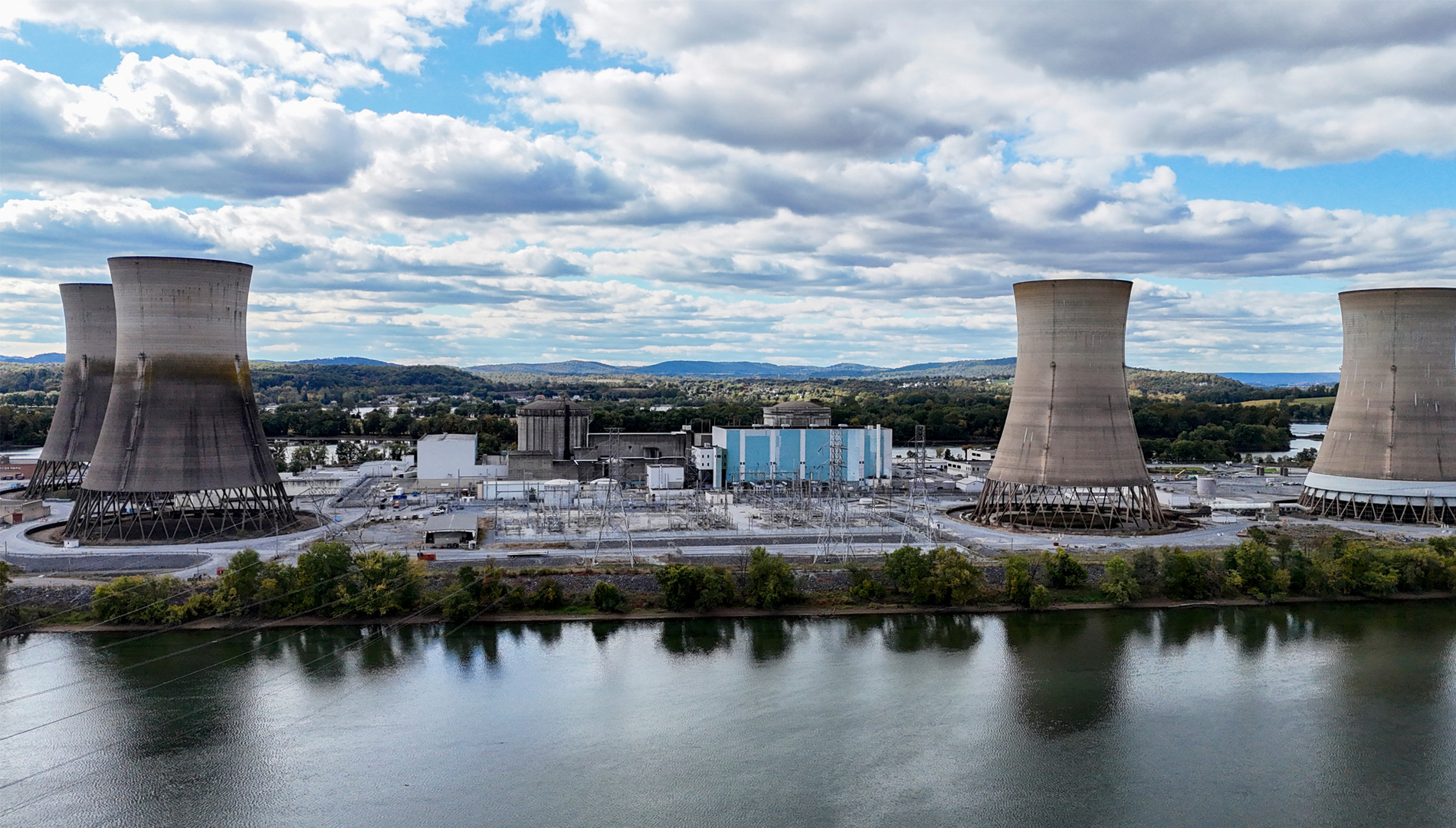AI is eating up Pennsylvania's power, governor threatens to pull state from the grid — new plants aren't being built fast enough to keep up with demand
Spiking demand is sending energy bills skyrocketing, while the governor threatens to pull the state from the grid.

Artificial intelligence and the hardware that powers it, is at the heart of a fallout in Pennsylvania, where electricity prices have risen dramatically for wholesalers and consumers due to surging demand. The governor is now threatening to abandon the state's grid energy provider, PJM Interconnection, via Reuters. He's demanding that PJM increase energy capacity through the acceleration of new energy plant construction and approval.
Following the launch of ChatGPT in 2023 and the explosion of competitor tools and chatbots in the months that followed, the regional transmission organization, PJM, saw a surge in demand for power as major tech companies scoured the country looking for spare grid capacity to run AI and build new data centers to support them. AI can demand a lot of power, so much so that Elon Musk is shipping an entire power plant to the US.
This couldn't have come at a worse time, as in 2022, PJM had paused new power plant connections after it faced a huge influx of applications for new renewable projects, which required more engineering oversight before they could be connected to the grid. Although PJM claims that this hasn't led to a shortfall in supply, it has meant the grid hasn't expanded like it was expected to. Local opposition to the construction of some of the plants that have been approved has further compounded the issue.
PJM's power management covers 13 states in total, including Virginia, which plays host to the so-called "Data Center Alley," a small region with the highest density of data centers in the world. It's the huge demand from that region and elsewhere in its coverage that PJM blames on its inability to supply power at affordable rates.
Last year's annual capacity auction for energy capacity saw prices increase by over 800%, and with an impending auction for this year, those prices are expected to rise again. It's lead to a projected 20% rise in consumer energy prices across Pennsylvania and other PJM-covered territories this summer.
Legislators aren't happy.
“We need speed from PJM, we need transparency from PJM and we need to keep consumer costs down with PJM,” Pennsylvania Governor Josh Shapiro told Reuters. “I think they've taken some steps in that direction which is really encouraging to me and we're going to continue to work at it.”
Get Tom's Hardware's best news and in-depth reviews, straight to your inbox.
PJM's response to the crisis has been to cap energy prices at $325 per megawatt-day, and it has fast-tracked connections of more than 50 power projects that should help augment its existing capacity, but many of those won't come online until the early 2030s.
Despite these aims, PJM estimates that the demand issue may only worsen. By 2030, it expects to require an additional 32 gigawatts of power capacity to meet growing demand, with over 30 of these allocated to new data center projects.
In the near term, with concerns about blackouts, the Trump administration has also ordered two oil and gas plants that were planned to close in May, to remain open through the summer.
Follow Tom's Hardware on Google News to get our up-to-date news, analysis, and reviews in your feeds. Make sure to click the Follow button.

Jon Martindale is a contributing writer for Tom's Hardware. For the past 20 years, he's been writing about PC components, emerging technologies, and the latest software advances. His deep and broad journalistic experience gives him unique insights into the most exciting technology trends of today and tomorrow.
-
oobyone Why are we, the regular customer, getting price gouged to pay for AI and data center expansion?Reply -
nikkileigh230 Reply
Why do regular consumers have to pay an egregious amount for energy bills because of AI? This rise in costs has been going on since covid and we all know that was years ago. It seems to me my home state of Pennsylvania can't get their act together!Admin said:Spiking demand is sending energy bills skyrocketing, while the governor threatens to pull the state from the grid.
AI is eating up Pennsylvania's power, governor threatens to pull state from the grid — new plants aren't being built fast enough to keep up with de... : Read more -
bit_user Reply
The problem with grid capacity are felt during peak demand periods. Electric cars can be programmed to charge overnight, specifically during low-demand hours.punkncat said:But hey, let's all be forced to get an electric car!
In fact, in some instances you can even turn around and sell some of the power in your batteries back to the grid, during peak periods, thus helping to alleviate the problem rather than making matters worse.
Does that make them a net positive? I don't know, but they're certainly not as dire as your comment implies. -
punkncat Replybit_user said:The problem with grid capacity are felt during peak demand periods. Electric cars can be programmed to charge overnight, specifically during low-demand hours.
In fact, in some instances you can even turn around and sell some of the power in your batteries back to the grid, during peak periods, thus helping to alleviate the problem rather than making matters worse.
Does that make them a net positive? I don't know, but they're certainly not as dire as your comment implies.
Considering the small number of electric cars as opposed to legislating everyone have one there is no way to logically calculate the actual load on the grid outside estimates. Since we can surmise by the post and other poignant information coming to light about the shortcomings in our power grid as a country, and additionally the world, it would seem the conclusion would not be good at current levels. Nor will this be good when we consider the time to build new power plants, of a type that aren't just as bad as ICE vehicles in light of cost and power source, alongside the infrastructure improvements that will have to be made, costs passed on to consumers lamented above...time spent as victims at random charging stations across the country notwithstanding...(off subject, a straw man as one poster might say).
The fact that many localities cannot supply clean power without brown-out under current conditions tends to lend to how DIRE the situation actually is. Alongside that let us consider the issues such as what happened in Texas a few years ago with the cold and people having no power due to demand. Add millions of recharging battery packs on top of that. -
Mr Majestyk Reply
Forced? By who exactly, oh let me guess it's all Biden's fault right.punkncat said:But hey, let's all be forced to get an electric car! -
thestryker Reply
So the amount of power cited in the article that needs to be added is 30GW for these datacenters in the coverage area of the power provider. A standard L2 home charger pulls ~11.5kW maximum so if we use that figure the amount of power for just the new datacenters is the equivalent of charging over 2.6m cars at the same time.punkncat said:Considering the small number of electric cars as opposed to legislating everyone have one there is no way to logically calculate the actual load on the grid outside estimates. Since we can surmise by the post and other poignant information coming to light about the shortcomings in our power grid as a country, and additionally the world, it would seem the conclusion would not be good at current levels. Nor will this be good when we consider the time to build new power plants, of a type that aren't just as bad as ICE vehicles in light of cost and power source, alongside the infrastructure improvements that will have to be made, costs passed on to consumers lamented above...time spent as victims at random charging stations across the country notwithstanding...(off subject, a straw man as one poster might say).
The fact that many localities cannot supply clean power without brown-out under current conditions tends to lend to how DIRE the situation actually is. Alongside that let us consider the issues such as what happened in Texas a few years ago with the cold and people having no power due to demand. Add millions of recharging battery packs on top of that.
While the grid is certainly a problem, and has been for decades, the rate of actual electric car adoption is nothing in comparison. So if you're going to be pointing fingers at consumption problems you've got the wrong target. -
jp7189 Three mile island is in PA, and they recently approved restarting. What's the timeline for bringing that back online?Reply